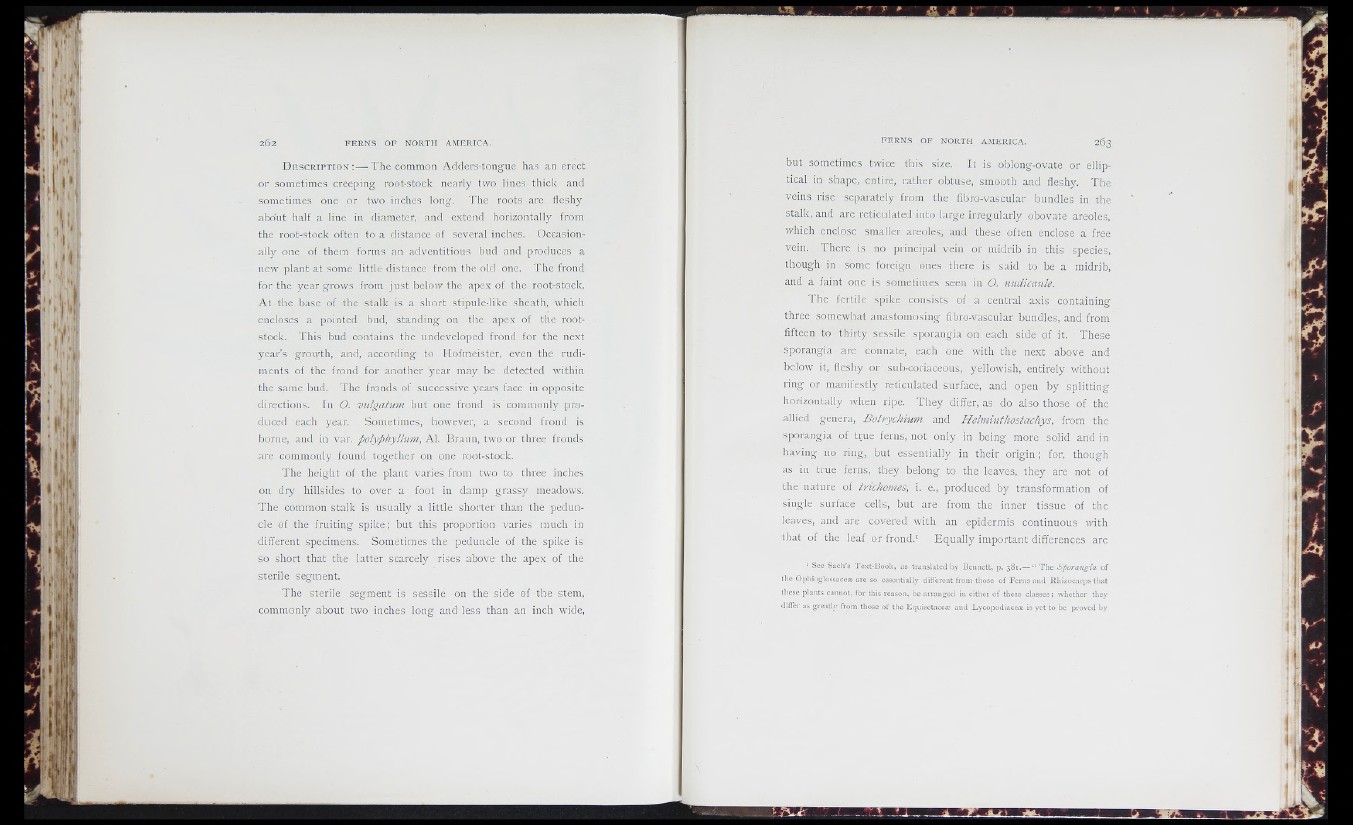
I*
ïu'i'l
r i ' i
D e s c r i p t i o n : — The common Adders-tongue has an erect
or sometimes creeping root-stock nearly two lines thick and
sometimes one or two inches long. The roots are fleshy
about half a line in diameter, and extend horizontally from
the root-stock often to a distance of several inches. Occasionally
one of them forms an adventitious bud and produces a
new plant at some little distance from the old one. The frond
for the year grows from just below the apex of the root-stock.
At the base of the stalk is a short stipule-like sheath, which
encloses a pointed bud, standing on the apex of the root-
stock. This bud contains the undeveloped frond for the next
year’s growth, and, according to Hofmeister, even the rudiments
of the frond for another year may be detected within
the same bud. The fronds of successive years face in opposite
directions. In O. vulgahtm but one frond is commonly produced
each year. Sometimes, however, a second frond is
borne, and in var. polyphyllum, Al. Braun, two or three fronds
are commonly found together on one root-stock.
The height of the plant varies from two to three inches
on dry hillsides to over a foot in damp grassy meadows.
The common stalk is usually a little shorter than the peduncle
of the fruiting spike ; but this proportion varies much in
different specimens. Sometimes the peduncle of the spike is
so short that the latter scarcely rises above the apex of the
sterile segment.
The sterile segment is sessile on the side of the stem,
commonly about two inches long and less than an inch wide,
but sometimes twice this size. It is oblong-ovate or elliptical
in shape, entire, rather obtuse, smooth and fleshy. The
veins rise separately from the fibro-vascular bundles in the
stalk, and are reticulated into large irregularly obovate areoles,
which enclose smaller areoles, and these often enclose a free
vein. There is no principal vein or midrib in this species,
though in some foreign ones there is said to be a midrib,
and a faint one is sometimes seen in O. nudicaule.
The fertile spike consists of a central axis containing
three somewhat anastomosing fibro-vascular bundles, and from
fifteen to thirty sessile sporangia on each side of it. These
sporangia are connate, each one with the next above and
below it, fieshy or sub-coriaceous, yellowish, entirely without
ring or manifestly reticulated surface, and open by splitting
horizontally when ripe. They differ, as do also those of the
allied genera, Botrychium and Helminthostachys, from the
sporangia of true ferns, not only in being more solid and in
having no ring, but essentially in their origin ; for, though
as in true ferns, they belong to the leaves, they are not of
the nature of trichomes, i. e., produced by transformation of
single surface cells, but are from the inner tissue of the
leaves, and are covered with an epidermis continuous with
that of the leaf or frond.’ Equally important differences are
‘ See Sach’s Text-Book, as translated by Bennett, p. 38 t .— “ The S ifo ra n gia o f
the Ophioglossacere are so essentially different from those o f Ferns and llhizocarps that
these plants cannot, for this reason, be arraiigecl in cither o f these classes ; whether they
differ as greatly from those o f the Eqiiisctacea; and Lycopodiacere is yet to be proved by
I ¡
' IL
! l